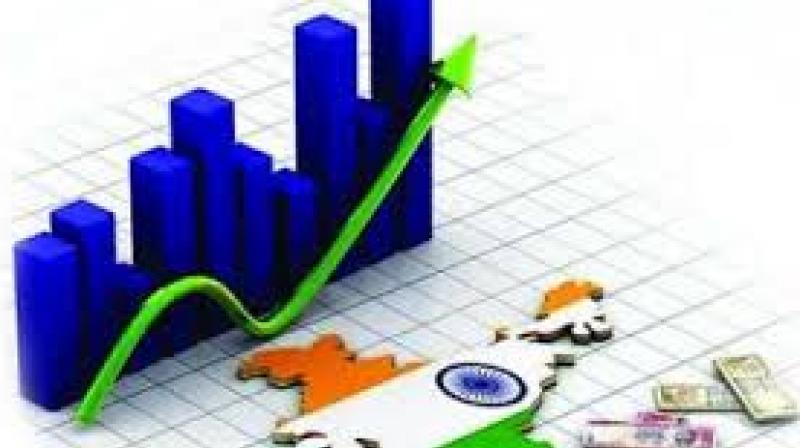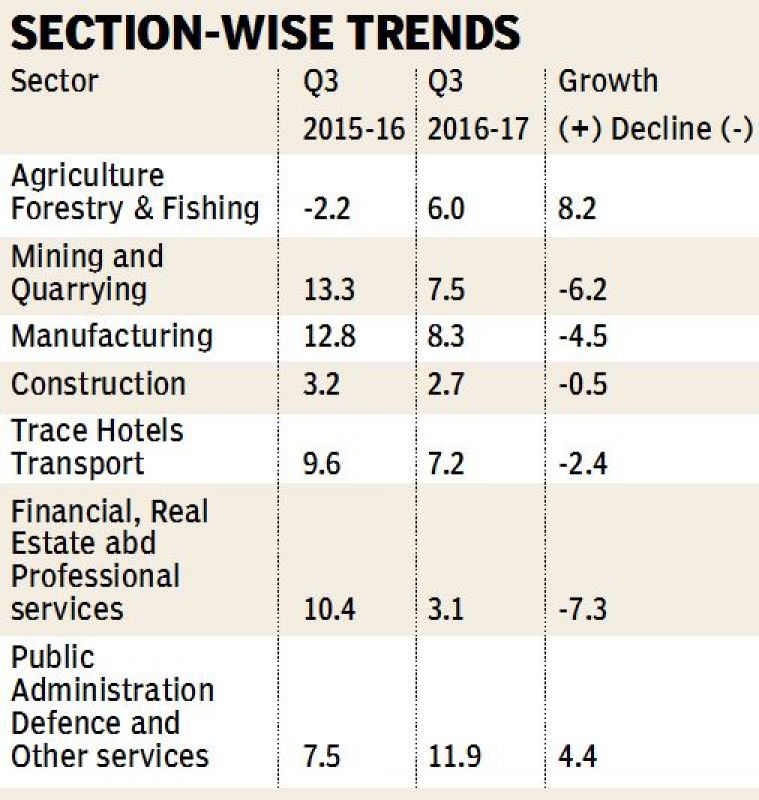Pay revision has GDP figures up
GVA at basic prices does not include any taxes, including indirect taxes net of subsidies.

There is palpable glee among the protagonists of demonetisation that GDP growth is at 7 percent and the predictions about decline of GDP have been proved squarely wrong. GDP has grown at 7 percent in real terms in the quarter October –December 2016. What is hidden here are two major underlying trends which reveal that the reality is otherwise.
1. Gross Value Added (GVA) has grown at 6.6 percent. GVA at basic prices does not include any taxes, including indirect taxes net of subsidies. This is more reliable as during the last financial year, indirect taxes, namely excise duties of the centre had an unusual bountiful growth due to higher taxes on falling oil prices. This effect will cause an unnatural rise in GDP, which includes indirect taxes, but not in GVA.
2. Quarter-wise growth in a financial year is to be compared with the same quarter of the previous year ( Q3 of 2016-17 with Q3 of 2015-16) and not with the preceding quarter of the same financial year as growth has its seasonal patterns.
It can be seen that 5 out of the 7 sectors have seen a decline and these include manufacturing, construction and finance and real state. Agricultural sector rebound is from a very low base effect of -2.2 percent. The growth of 4.4 percent in public administration is due to inclusion of Seventh Pay Commission salaries and arrears and GVA in this sector is measured by income method. If we net for the pay commission impact, which is a one-time measure, the growth rate of GVA will be 6.01 in Q3 of 2016-17 (the pay commission impact on growth increase of 4.5 percent weighted by sectoral share of public services and defence which works out to 0.59 which is excluded).
It is clear that if one-time pay commission impact is netted out, the growth of GVA is 6.01 percent from Q3 of 2016-17. This is a decline of one percent in GVA from Q3 of 2015-16 and is in line with the prognosis of many experts and even that of the Economic Survey. In Q1 and Q2 also, the growth rate of GVA had a decline of 0.9 and 1.7 percent respectively in 2016-17 from that during 2015-16. The slowdown continues and sans one time impact of pay commission payments and windfall in excise duties, demonetisation has slowed down the economy as reflected by GVA by one percent in Q3 of 2016-17, which is not very off the mark from the predictions.
For April- December 2016, the government sources estimate GVA growth for 2016-17 at 6.7 percent as against 7.7 percent for 2015-16 at 2011-12 prices (Statement 9 of the press release). If the seventh pay commission impact is netted, the growth estimate for April- December 2016 would fall to 6.18 percent implying a decline in growth of 1.52 percent in real terms.
It is said that statistics can prove anything. Here, statistical aggregates may tell anything, but disaggregated do tell the truth. The summary figures miss the woods for trees, this time as a strategy.


